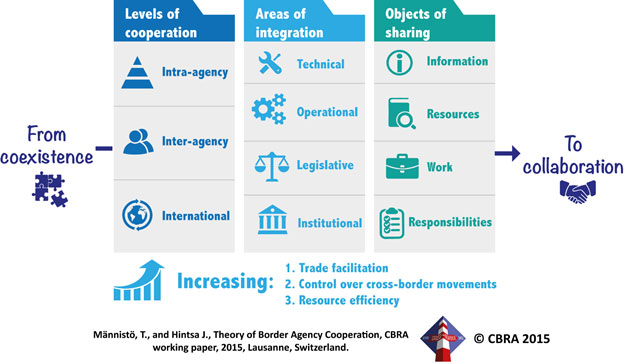COSO. Enterprise Risk Management — Integrated Framework – Executive Summary. Committee of Sponsoring Organizations of the Treadway Commission. September 2004. (CORE1106)
Summary: The Committee of Sponsoring Organizations of the Treadway Commission, COSO, defines Enterprise Risk Management, ERM, as a process, effected by an entity’s board of directors, management and other personnel, applied in strategy setting and across the enterprise, designed to identify potential events that may affect the entity, and manage risk to be within its risk appetite, to provide reasonable assurance regarding the achievement of entity objectives. The entity objectives are set forth in following four categories: (i) Strategic – high-level goals, aligned with and supporting its mission; (ii) Operations – effective and efficient use of its resources; (iii) Reporting – reliability of reporting; and (iv) Compliance – compliance with applicable laws and regulations. According to COSO, ERM enables management to effectively deal with uncertainty and associated risk and opportunity, enhancing the capacity to build value. Within the context of FP7-CORE project – and, supply chain security management in general – ERM can be seen as a useful approach particularly when it comes to aligning security risk appetite and strategy; to enhancing security risk response decisions; and to reducing security related operational surprises and losses. Some other ERM aspects such as seizing opportunities (“positive risks”) may not apply in supply chain security management context. One more interesting note, which could also be applied for supply chain security: everyone in an entity has some responsibility for ERM. This executive summary document is available for download at: http://www.coso.org/documents/coso_erm_executivesummary.pdf
[s2If is_user_logged_in()]
Full review:
Background: The first version of the “Internal Control – Integrated Framework” was issued by the Committee of Sponsoring Organizations of the Treadway Commission, COSO, in early 1990s, to help businesses and other entities assess and enhance their internal control systems. The change of the millennium saw heightened concern and focus on risk management, and it became clear that a need exists for a robust framework to effectively identify, assess, and manage risk. In 2001, COSO initiated a project, and engaged PricewaterhouseCoopers, to develop a framework that would be readily usable by managements to evaluate and improve their organizations’ enterprise risk management.
According to COSO (p.1), Enterprise Risk Management, ERM, encompasses:
- Aligning risk appetite and strategy – Management considers the entity’s risk appetite in evaluating strategic alternatives, setting related objectives, and developing mechanisms to manage related risks.
- Enhancing risk response decisions –Enterprise risk management provides the rigor to identify and select among alternative risk responses – risk avoidance, reduction, sharing, and acceptance.
- Reducing operational surprises and losses – Entities gain enhanced capability to identify potential events and establish responses, reducing surprises and associated costs or losses.
- Identifying and managing multiple and cross-enterprise risks – Every enterprise faces a myriad of risks affecting different parts of the organization, and enterprise risk management facilitates effective response to the interrelated impacts, and integrated responses to multiple risks.
- Seizing opportunities – By considering a full range of potential events, management is positioned to identify and proactively realize opportunities.
- Improving deployment of capital – Obtaining robust risk information allows management to effectively assess overall capital needs and enhance capital allocation.
COSO (pp.3-4) states that ERM consists of eight interrelated components, derived from the way management runs an enterprise and are integrated with the management process:
- Internal Environment – The internal environment encompasses the tone of an organization, and sets the basis for how risk is viewed and addressed by an entity’s people, including risk management philosophy and risk appetite, integrity and ethical values, and the environment in which they operate.
- Objective Setting – Objectives must exist before management can identify potential events affecting their achievement. Enterprise risk management ensures that management has in place a process to set objectives and that the chosen objectives support and align with the entity’s mission and are consistent with its risk appetite.
- Event Identification – Internal and external events affecting achievement of an entity’s objectives must be identified, distinguishing between risks and opportunities. Opportunities are channeled back to management’s strategy or objective-setting processes.
- Risk Assessment – Risks are analyzed, considering likelihood and impact, as a basis for determining how they should be managed. Risks are assessed on an inherent and a residual basis.
- Risk Response – Management selects risk responses – avoiding, accepting, reducing, or sharing risk – developing a set of actions to align risks with the entity’s risk tolerances and risk appetite.
- Control Activities – Policies and procedures are established and implemented to help ensure the risk responses are effectively carried out.
- Information and Communication – Relevant information is identified, captured, and communicated in a form and timeframe that enable people to carry out their responsibilities. Effective communication also occurs in a broader sense, flowing down, across, and up the entity.
- Monitoring – The entirety of enterprise risk management is monitored and modifications made as necessary. Monitoring is accomplished through ongoing management activities, separate evaluations, or both.
Lastly, as potential readers / users of this report, COSO suggests following: Board of Directors; Senior Management; Managers and other personnel; Regulators; Professional Organizations; and Educators.
[/s2If]





